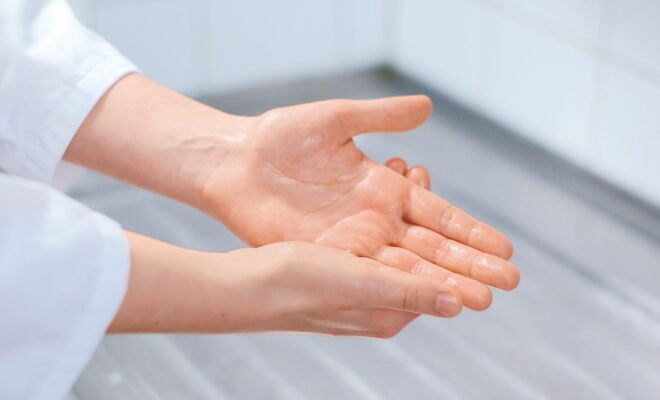
Health x Wellness
schülke Asia shares about hand hygiene and combating misinformation
schülke Asia advocates support for the WHO’s SAVE LIVES: Clean Your Hands campaign and the importance of hand hygiene in health care.
World Hand Hygiene Day took place on 5 May this year, and is an annual initiative by the World Health Organisation (WHO) under their ‘SAVE LIVES: Clean Your Hands’ annual global campaign. The campaign focuses on the importance of improving hand hygiene in health care.
With this focus on advocating for infection prevention through supporting the WHO campaign, schülke Asia‘s Managing Director, Wong Seow Ling, shared with the Active Age their opinion about hand hygiene habits during the pandemic, as well as combating misinformation by informing and educating the public.
the Active Age (AA): In your opinion, how has the pandemic helped to increase awareness about infection prevention, and hygiene, specifically through maintaining proper hand hygiene habits?
Ms. Wong Seow Ling (WSL): Before discovering the first case of COVID-19 in Singapore in January 2020, most Singaporeans would have deemed the 2003 SARS (severe acute respiratory syndrome) epidemic and the 2009 H1N1 virus as the worst pandemics that shook our lives.
The generations from baby boomers to Gen Y, who had been most affected by the past two pandemics, would have remembered the pain from living through those times when there was high uncertainty on how each pandemic will pan out. Hand hygiene practices and education were ramped up during each pandemic, which tended to sizzle off as they became a less remembered past.
Hand hygiene awareness from the public has been raised to one of the highest levels ever. It was primarily due to the following factors:
- The severity of those ill with COVID-19
- The extended period of this pandemic
- It causes a significant impact on everyone’s life globally
- Strong health authority efforts to educate and band Singaporeans together to have better hand hygiene habits
The commonness can be seen in adults and children carrying a bottle of pocket hand disinfectant, the wide variety of hand disinfectant products available in the pharmacies, and the strong emphasis that the general public places on using the right products are efficacious.
AA: Do you see this behaviour fading away as many countries start to move beyond the pandemic?
WSL: While there could be a time when many will be less concerned about hand hygiene as life goes back to normal, the impact that has been felt globally will make this a lesson hard to forget. I believe that with a better knowledge of the pandemic and having learnt how viruses can develop into other variants through the sharing from various health experts around the world, most will continue to keep up their good hand hygiene practices to protect themselves and their loved ones.
AA: How does schülke Asia look at creating an ecosystem of products to help with infection prevention?
WSL: schülke offers flexible solutions in the form of product assortments to tailor to the numerous application areas our customers require in the market.
We are backed by a strong research and development team in Germany that is fully committed to exploring the development of innovative products while consistently improving on the existing ones.
Our product management team worked closely with the customers to align their preferences and pain points while using our products. This synergistic approach gives us the advantage of continuously providing new and improved product offerings to improve infection control practices.
Coupled with the stringent testing regimens we enforce on our products, we are sure that our offerings are aligned with our mission statement, “To protect lives worldwide”, to ensure the quality of the products and the safety of our users.

AA: Why is combating disinformation important to schülke Asia, and how does the brand do so?
WSL: At schülke Asia, we emphasise collaborating with industry partners in Singapore and regionally to ensure that we can share our knowledge with our stakeholders and consumers.
With scientific and medical experts from our headquarters in Germany and APAC, we provide consistent, reliable and updated information gathered from the expert team, shared through our social media channels on Facebook, LinkedIn and the schülke Asia website. To us, knowledge is power, and consumers deserve to know what is best for them and make an informed decision.
AA: What would be the optimal regiment for the customer that wants to protect themselves and family members?
WSL: We should constantly maintain good hand hygiene by ensuring our hands and commonly touched areas/equipment, such as tables, chairs, laptops and mobile phones, are properly clean and sanitised. Cleaning of the hands is comprised of either washing or sanitising. Washing hands is carried out with mild soap and water for at least 60 seconds, whereas hand sanitising involves rubbing the alcohol-containing solution for 20 – 30 seconds.
Hand sanitising is a quick and more convenient way of cleaning the hands. It is important to use the right amount (3 millilitres (ml); a 50 cents coin size on the palm) for sufficient hand coverage to attain proper sanitisation.
AA: How can customers read and understand the labels of hygiene products to decide on which is the best product for them?
WSL: For hand sanitisers, one should determine if the product contains sufficient alcohol (60 – 70 percent) and whether they contain moisturising component(s) to keep skin hydrated after sanitisation. Importantly, appropriate certification to demonstrate the efficacy of the product is important.

One such certification is EN1500, a globally recognised gold-standard test on human volunteers’ hands to demonstrate that the product effectively reduces germ count when applied to the hands.
For handwashing products, a gentle formulation with skin compatible pH, adequate moisturising components (e.g. allantoin etc.) and being dermatologically tested are something consumers should actively look for when it comes to handwashing products.
Images credit to schülke Asia






